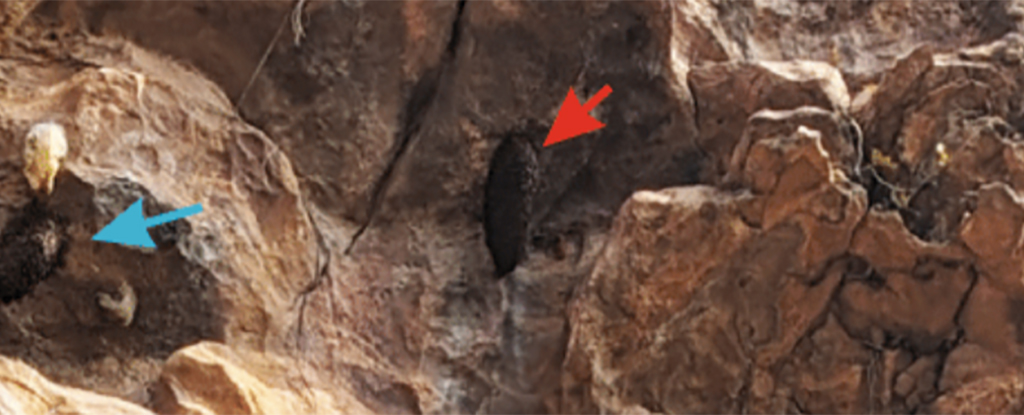The ancient Bhimbetka rock shelters in India are crucial to understanding the geological history of the subcontinent, but dating them is difficult due to a lack of fossils.
The researchers were therefore curious Find evidence of Dickinsonia creature in the caves in 2020 and puts its age at around 550 million years.
However, a new study reveals that what the scientists found was not Dickinsonia Fossil at all, but a beehive. That means the age of the caves is up for debate again, with some research suggesting they may have been in existence for as long as 1 billion years.
The latest twist in history occurred when explorers visited the caves and the alleged fossil of the Dickinsonia – a flat, oval, primitive marine organism. The “fossil” had decayed rapidly and was lying almost vertically against a wall, when it would normally have been found on the floor or ceiling.
“As soon as I looked at it, I thought, something is wrong here.” says geologist Joseph Meert from the University of Florida. “The fossil detached from the rock.”
That there were several other giant hives in the caves supported the new hypothesis. Further analysis revealed that it was in fact the remains of a rapidly decaying beehive, rather than the fossil of an animal that went extinct hundreds of millions of years ago.
If this had been a fossil, some of its decay could be due to soot from fires, the earlier study scholars argued at the time.
However, the latest study includes images showing dark spots around existing hives that could be mistaken for soot. The coloring that new study claimswas probably the result of propolis, a “sticky, brown-colored material composed of a mixture of beeswax, saliva, and plant resins used as “glue” to repair the hive and give it integrity”.
Besides, no one else Dickinsonia Fossils have ever been found anywhere near here.
Related to previous exams Based on the radioactive decay of tiny zirconium crystals, the researchers believe that the caves and the surrounding landscape are about 1 billion years old. The rock’s magnetic signatures are also consistent with the signatures of other rocks from this period.
“There are many implications” says Meert. “You have to do with the paleogeography of the time, what happened to the continents, where the continents were, how they were put together.”
“And it was a time when life went through a major shift, from very simple fossils to more complex fossils. So trying to figure out the paleogeography at that time is very, very important. And to figure out the paleogeography, we need to know the age of the rocks.”
While researchers in 2020 appear to have gotten this wrong, the authors behind the new study want to emphasize that this is how science works: study is added to study until the scientific facts come out.
That doesn’t mean there are tons of bogus studies out there. Rather, we know that many publications can be trusted because they have been analyzed by other scientists and tested by further research.
It’s difficult to admit you did something wrong – try to remember the last time you did it at home or work – but in this case the team thought they found a mistake Dickinsonia Fossil admits its mistakes.
“It is rare but important for scientists to admit that they are wrong when new evidence is uncovered,” says paleontologist Gregory Retallack from the University of Oregon, one of the researchers behind the earlier study.
The research was published in Gondwana Research.





